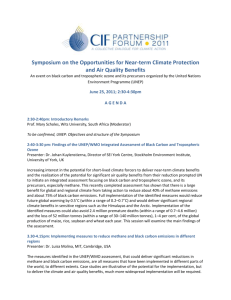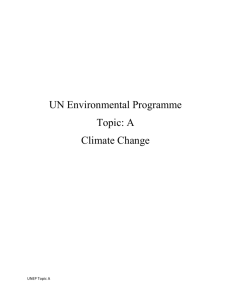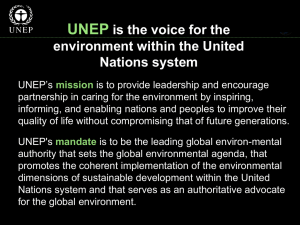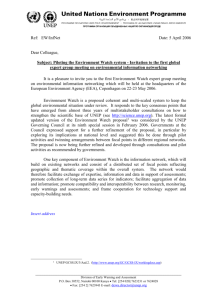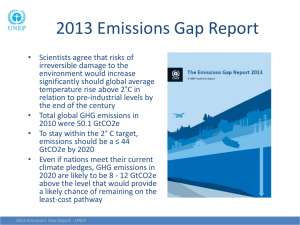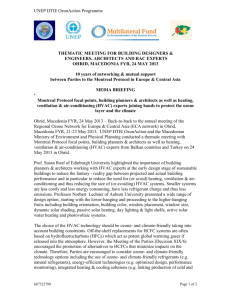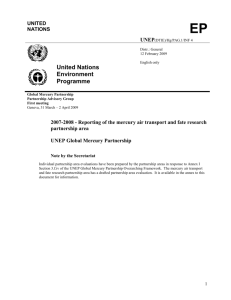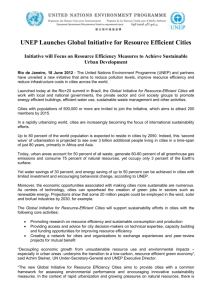UNITED
advertisement
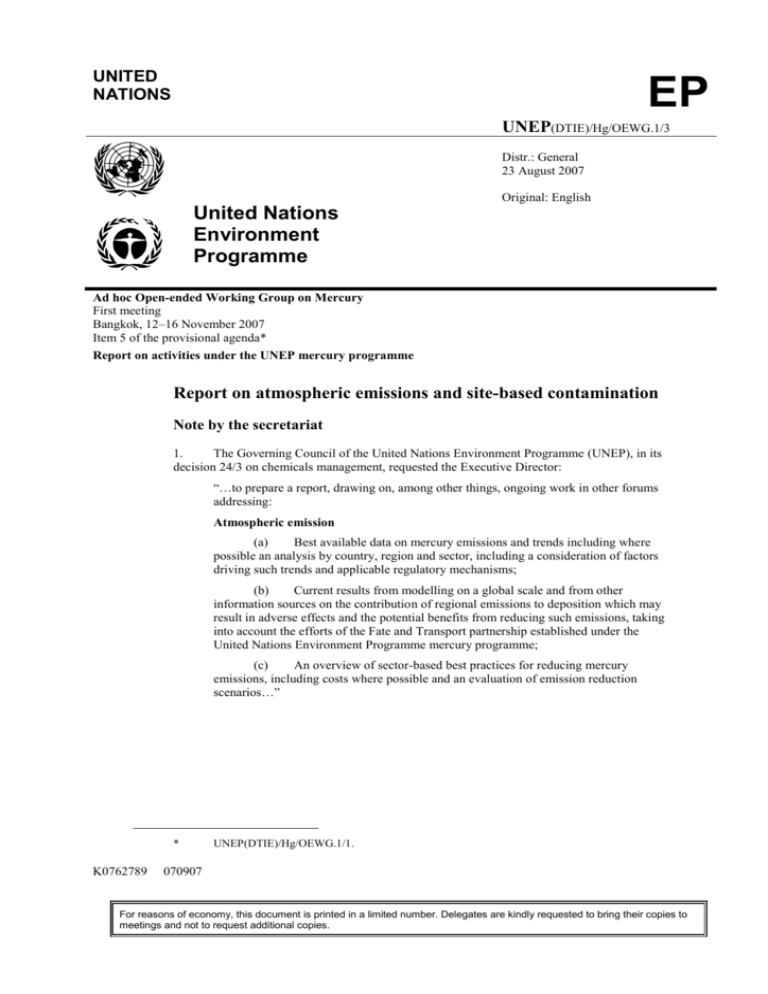
UNITED NATIONS EP UNEP(DTIE)/Hg/OEWG.1/3 Distr.: General 23 August 2007 Original: English United Nations Environment Programme Ad hoc Open-ended Working Group on Mercury First meeting Bangkok, 12–16 November 2007 Item 5 of the provisional agenda* Report on activities under the UNEP mercury programme Report on atmospheric emissions and site-based contamination Note by the secretariat 1. The Governing Council of the United Nations Environment Programme (UNEP), in its decision 24/3 on chemicals management, requested the Executive Director: “…to prepare a report, drawing on, among other things, ongoing work in other forums addressing: Atmospheric emission (a) Best available data on mercury emissions and trends including where possible an analysis by country, region and sector, including a consideration of factors driving such trends and applicable regulatory mechanisms; (b) Current results from modelling on a global scale and from other information sources on the contribution of regional emissions to deposition which may result in adverse effects and the potential benefits from reducing such emissions, taking into account the efforts of the Fate and Transport partnership established under the United Nations Environment Programme mercury programme; (c) An overview of sector-based best practices for reducing mercury emissions, including costs where possible and an evaluation of emission reduction scenarios…” * K0762789 UNEP(DTIE)/Hg/OEWG.1/1. 070907 For reasons of economy, this document is printed in a limited number. Delegates are kindly requested to bring their copies to meetings and not to request additional copies. UNEP(DTIE)/Hg/OEWG.1/3 2. UNEP has initiated work on developing a report responding to that request. The report of the Executive Director will draw on input from the Fate and Transport Partnership, which will focus on emissions, monitoring and atmospheric modelling. That input will be supplemented by updated global mercury inventory and new model results developed by the Arctic Monitoring and Assessment Programme (AMAP) working group under the Arctic Council. Coordination between the two major inputs will be achieved through a small coordination group comprising UNEP, the Fate and Transport Partnership lead and the AMAP secretariat. An outline of the report will be available at the meeting. 3. In decision 24/3, under the heading “site-based contamination”, the Governing Council also requested the Executive Director to provide in his report: “…An analysis of information on the extent of contaminated sites, the risks to public and environmental health of mercury compound releases from such sites, environmentally sound mitigation options and associated costs and the contribution of contaminated sites to global releases…” 4. Limited information on contaminated sites has been provided by countries in response to the request contained in the letter of 24 April 2007 from the Director of the UNEP Division of Technology, Industry and Economics. That information, and any further information provided, will be compiled and included in the Executive Director’s report to the Governing Council at its twenty-fifth session. 5. Regarding the requirement to provide an overview of sector-based best practices for reducing mercury emissions, including costs where possible, the secretariat draws attention to the UNEP report “Guide for reducing major uses and releases of mercury, June 2006” which is available as document UNEP(DTIE)/Hg/WG.1/INF/6 and requests Governments, and others in a position to do so, to provide additional or updated information to the secretariat by 31 December 2007. Possible action 6. The Open-ended Working Group may wish: (a) To note the progress in developing the report to the Governing Council called for in decision 24/3; (b) To note that limited information on contaminated sites has been provided on which to base the Executive Director’s report to the Governing Council; (c) To request Governments, and others in a position to do so, to provide additional or updated information relating to contaminated sites and best practices for reducing mercury emissions to the secretariat by 31 December 2007. ____________________ 2
